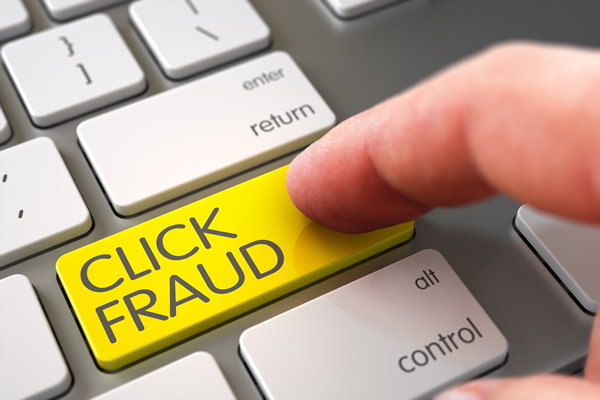Have you noticed that your marketing efforts have plateaued and growth hasn’t been where you hoped? It’s not that you’re doing anything wrong. It’s just that tactics you’ve relied on may no longer resonate with your audience. So why not spice it up a bit? Here are eight fresh and exciting marketing tactics perfect for small businesses.
1. Offer rewards for referrals.
Did you know that 82 percent of Americans seek recommendations from friends and family before making a purchase? For those between the ages of 18 and 34, that figure jumps to 92 percent.
Simply put, word-of-mouth recommendations can greatly influence purchases. But how can you encourage referrals and recommendations?
One of the easiest ways is to simply offer discounts and deals to current customers who refer your business to friends and family.
2. Experiment with different social channels.
Chances are you’re at least using Facebook, but why not experiment with some other social channels like LinkedIn and Twitter? Instagram and Pinterest are ideal for sharing visual content. This may not work for every business, but they could be used to share images of your products, behind-the-scenes pictures, or even for user-generated content where you ask your audience to share pics of them enjoying your product or service. And there’s Snapchat. It’s extremely popular with millennials, and brands like Taco Bell have figured out how to tap into that popularity.
There’s also the microblogging platform Tumblr that comes with multimedia functionality. Want to learn more about how Tumblr can help your business?
Before committing to a new social channel, weigh the pros and cons to make sure it’s a good fit with your business and audience. I’ve found that most clients do best with one or a combination of social channels. You just need to figure out what works best for your company.
3. Combine email and social.
Email marketing remains your most powerful tool for gaining and retaining customers. Because social media platforms make algorithm tweaks that can limit the visibility of your content, email marketing gives you the chance to reach your customers directly.
Combining your email marketing and social media activities using simple social sharing tools can help you find new customers as you reach out to existing ones.
For starters, you can include a simple “share” button in your email content so your subscribers can post your message on social media. You can also convert your social media followers into email subscribers just by sharing a link to your email sign–up form on your various social media channels.
And thanks to Facebook’s Custom Audience, you can target customers via their email addresses. This allows you to stay engaged with customers who have abandoned old email addresses. For example, you can retarget customers with ads for the products that they either viewed on your site or left in their shopping cart.
4. Interact with other businesses online or build friendly rivalries.
This can get tricky, but when done correctly, it’s definitely a unique and effective marketing idea. For instance Old Spice. The brand’s sassy tweets have engaged brands like Oreo. It’s not vicious, nor does it cross any lines. It’s lighthearted and amusing banter that keeps their audiences engaged.
For small businesses, engaging in friendly rivalry may not work in close-knit communities. But giving them a shout-out on social media or linking their pages is an excellent way to build a mutual and beneficial online relationship. Eventually, you may even decide to team up together for contests and deals.
5. Run contests.
Contests are an easy way to encourage your audience to engage with your brand.
For example, you could organize a photo contest or raffle for which customers could win a prize. Just make sure the prize is something your audience actually cares about or is somewhat relevant to your brand.
Remember, too, that you’ll need to have a clearly defined goal that benefits your business on top of that awesome prize you’ve put up for grabs. This goal could be anything from getting more visitors to your websites to building your email list or increasing your social media followers.
And don’t forget to announce your contest or raffle on your social media channels and send out an email blast as well.
6. Participate in small business sites and forums.
Participating in small business sites is a learning experience, as well as a viable marketing strategy. Sites like Startup Nation and /r/Entrepreneur subs can be used for business owners and marketers to discuss and exchange ideas on marketing strategies and campaigns.
For instance, you can create a case study for one of your business projects or marketing campaigns. Because entrepreneurs are constantly on the lookout for tips and tactics they can use for their business, it’s an easy way to generate some buzz for your business.
As an added bonus, you can include some links to previous blog or social posts that are relevant to the discussion to gain some traffic back to your site. That will probably help optimize your site for SEO too.
7. Publish other content besides blog posts.
Publishing blog posts that contain valuable content for your audience is always a smart move — as long as it’s consistent and provides your audience with value.
However, you can’t just rely on blog posts.
Most of us are visual learners. That’s why content like inspiring pictures, infographics, or videos are so effective. They’re easy to digest and can be shared online with just a click of a button. Other content, such as case studies or white papers, prove that you’re an authority figure, while podcasts and webinars give your audience a chance to become part of the discussion.
8. Share your community and social efforts.
Customers are now paying attention to the social, economic, and environmental impact that businesses have. And it’s a prevalent mindset among the largest age demographic: millennials.
One study found that “81% of millennials expect companies to make a public commitment to good corporate citizenship.” Another discovered that “more than nine in 10 millennials would switch brands to one associated with a cause (91% vs. 85% U.S. average).”
But don’t give back just for a photo op. Giving back needs to be integrated into your brand’s identity.
You can give back to your community by:
- Leading a fundraising mission for a local nonprofit.
- Hosting a community volunteer day.
- Sponsoring a Little League or high school sports program.
- Donating unsold items. For example, if you run a bakery, you could give food products to a local food bank.
- Hosting an informational service around your products or services. For instance, if you were an accountant, you could provide free tax preparation for seniors or your fellow small business owners.




